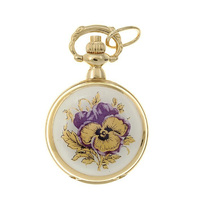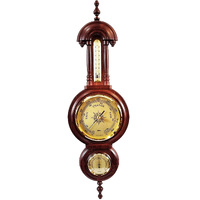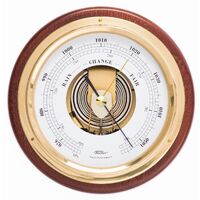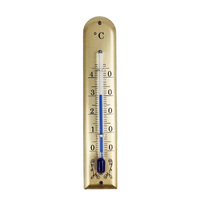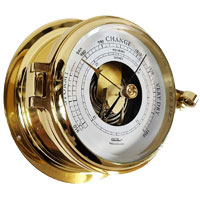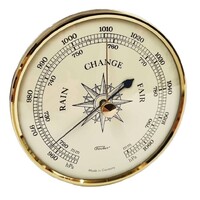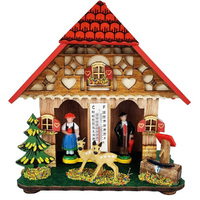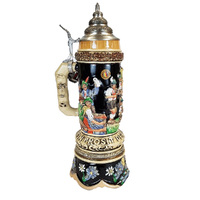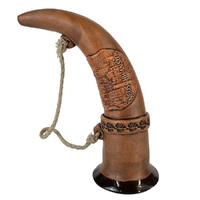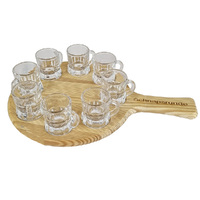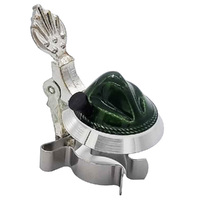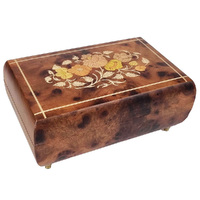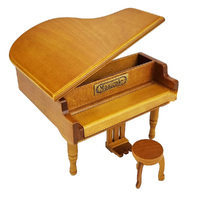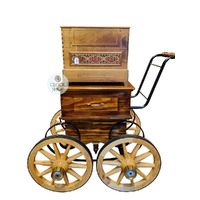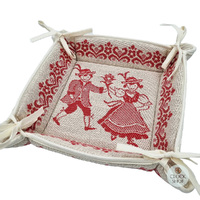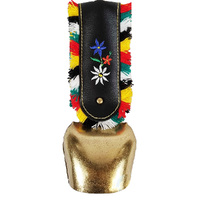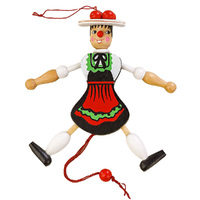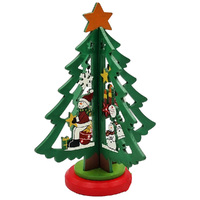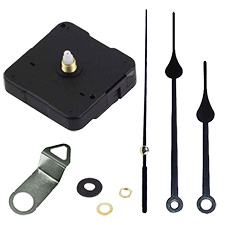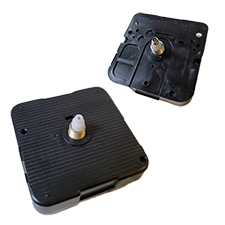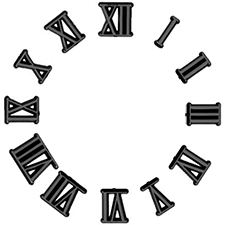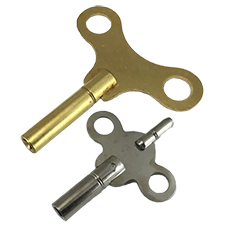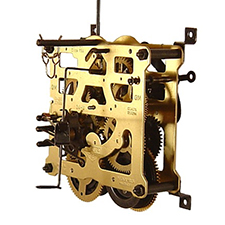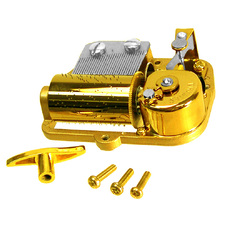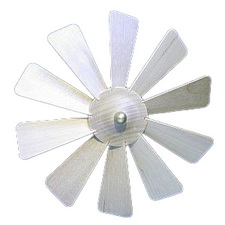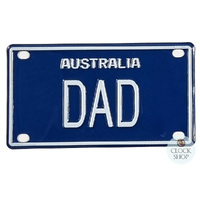The Case of the Traditional Wall Clock
Author: Clock Shop Date Posted:1 August 2021

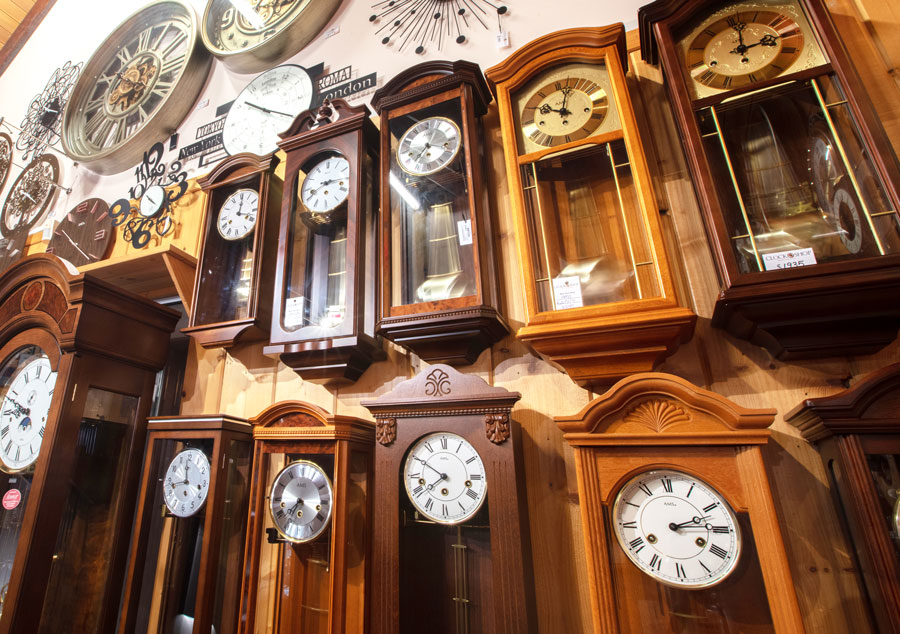
Both elegant and timeless in design, traditional wall clocks add a touch of nostalgia and old world charm, and can make a beautiful addition to any room in your home. Crafted with precision and attention to detail, these elegant timepieces commonly feature impressive walnut, cherry & brass casings, where the overall design style and craftsmanship hasn't changed much over the centuries. Whilst many of these beautiful designs offer an alternative to the more modern and contemporary round wall or office clocks that are commonplace today, some designers are producing more modern looking traditional wall clocks, offering a fresh take on a classic design to better suit the modern space.
What types of traditional wall clocks are there?
There are three main types of traditional wall clocks- mechanical operated, battery operated and regulator wall clocks which are available in a range to suit all budgets and tastes. Generally speaking, the price is reflected in the added details of the clock, with the base models offering beautiful details in the door with more simplistic features, whilst the higher range offers more details in the finished product. Some examples of this added detail can include contrast chamfered edges, burled wood detail, side glass, highly glossed finishes, and sometimes a small key draw or concealed cavity in the bottom of the case.
A Closer Look Into the Mechanics of Traditional Wall Clocks
The most common type of traditional wall clock is mechanically operated, and requires winding with a key in the dial once a week - these are available in either chiming or striking models. How to tell the difference between the two?
A chiming clock features three holes in the dial, each linked to a different spring- one drives the timekeeping pendulum, the second gives power to the chime that runs every 15 minutes, and the last spring is linked to the strike that strikes the time on the hour once the chime is completed - an example would be the clock striking 3 times at 3 o’clock. Chiming clocks typically chime the famous Westminster chime aka the Big Ben chime, however in most clocks they can also be silenced manually should that be preferred. This is done using an on/off lever. Some models also feature an automatic night off function, which will disengage the chiming through the evening, allowing you a sound sleep before recommencing again the next morning. As it is mechanically operated this is a pre-set time and requires the clock to be set in the correct 12 hour cycle.
A striking clock on the other hand features 2 holes in the dial, each linked to a spring - one that drives the timekeeping pendulum, and the other for the strike that strikes on the hour.
In the mechanical range of traditional wall clocks, the sound is produced by little hammers hitting tuned chime bars or chime rods inside the clock to create a melody. When it is time for the hourly strike, a sequence of 3 or 4 hammers will hit the chime rods at the same time to produce the chime.
To ensure longevity of your mechanical traditional wall clock which often runs for 24 hours a day, 7 days a week for many years without stopping, it is recommended to get a service and a maintenance clean every 7 to 10 years. This should always be carried out by a qualified professional clockmaker.
Some traditional wall clocks don’t have any holes in the dial- these represent the range of quartz clocks which are run by battery. Many of the battery models will also chime the Westminster chime, with the option to change to a Bim Bam strike mode if preferred. Similar to the mechanical range, a battery operated traditional wall clock will often feature either a reduced volume night time mode, or the option to silence the chime or strike altogether should that be preferred. In the case of a battery operated clock, the sound is produced by a small speaker mounted inside the case, with the only maintenance required is to simply change the battery! We recommend that you change the battery every 12 months even if the clock is still functioning perfectly.
The third type of traditional wall clock available is a regulator model wall clock, which is defined as a weight driven clock regulated by a swinging pendulum. This type of clock was invented in the late 1700’s, to improve the accuracy of spring wound clocks. Regulator wall clocks are available in both striking and chiming weight driven models, and rather than winding a spring in the dial, the weights are wound similar to that of a grandfather clock. Some models are both weight and spring wound, so the weight delivers constant power to the pendulum to keep the time, whilst the chimes and strike are operated by springs. This type requires winding using a crank key in the dial, with the weights suspended from a carriage that moves on a cable, which gets wound once a week.
Mechanical weight driven regulators are beautiful clocks that are often larger in size, ranging from 900mm to 1200mm in height, with the long length of the pendulum adding a beautiful effect to the overall aesthetic of this design, creating a statement piece similar to that of a grandfather clock or floor standing clock without taking up as much space.
For a wide selection of high quality traditional wall clocks, look no further than the Clock Shop. On offer is a variety of both timeless and modern traditional wall clocks imported from Germany, from a handful of carefully selected companies that produce products renowned for their high quality craftsmanship. Browse the entire range of traditional wall clocks today.
Still struggling to decide which Traditional Wall Clock is right for you?
Consider these further points.
- Choose the correct size: Consider your space carefully and determine what sort of statement you are hoping to make. Whilst bigger items offer an eye-catching statement piece to enhance a room, sometimes it is the smaller, more delicate traditional wall clocks that can add understated elegance and enhance your room’s overall look. Take careful measurements of the space you wish to place your new clock. Think about how much space you will need to leave, and size the clock appropriately for a neat appearance. For larger rooms, a weight-driven wall clock with a bigger dial such as our Westminster Chiming Regulator Wall Clock by AMS is a prime choice, whilst smaller or more modern designed rooms would benefit from the elegant satin black design of our Black Modern Cable Driven Regulator Clock by HERMLE.
- Be mindful of colour preference: Our traditional wall clocks come in a variety of timber colours and designs including walnut, cherry, oak and sleek black. When making your selection, ask yourself if you want the clock to match the rest of the décor in your chosen space. Alternately, why not consider choosing a completely different colour to your decor to make the clock a truly unique and a stand out feature.
- Consider the sound of your clock: Different clocks can fill your home with different sounds, so before you finalise your purchase, make sure you have an idea of what sound you would be happy to listen to in your chosen space. Chiming clocks commonly feature a single Westminster chime, however you might instead prefer a clock that is purely a timepiece. If that’s the case, why not consider our 31 Day Precision Regulator Clock by HERMLE, which is crafted in a beautiful solid walnut contemporary case, featuring a very high quality movement with a Graham escapement with ruby pallets, both ruby and precision ball bearings for greater accuracy and longevity, and a carbon fibre rod pendulum. This highly precise timepiece does not chime and will last for generations.
Want To Learn More About Traditional Wall Clocks?
Watch our Video Below For More Information
Did you know?
Prior to the introduction of the pendulum clock in the mid 17th century, clocks had a margin of error of 15 minutes a day. The invention of a pendulum as a harmonic oscillator timekeeping element reduced this margin of error to 15 seconds, making the pendulum clock the most accurate timekeeping method for centuries, lasting until the invention of the quartz battery movement in the 20th century.
Comments (1)
very informative. excellent
By: Antony Marshall on 24 September 2021do you supply pendulum movements and faces and parts for home building of longcase clocks. I have joinery skills and stained glass manufacture skills and wood turning skills and am soon to retire. Looking for a project.
Clock Shop Response
Hi Antony, thank you for your feedback. Yes, we can supply all components to build a longcase clock. Feel free to reach out when you need further information. Regards, Daniel




















